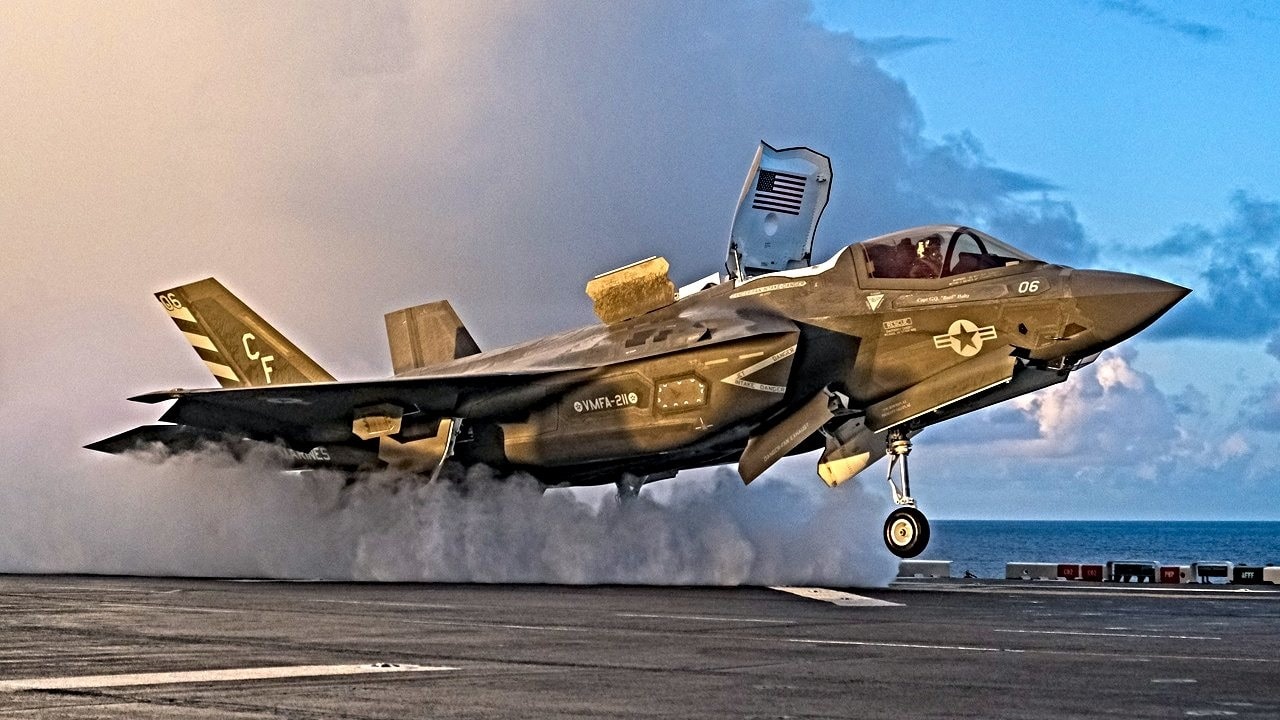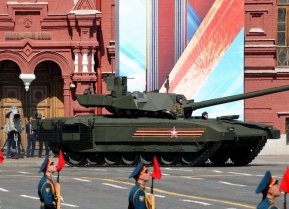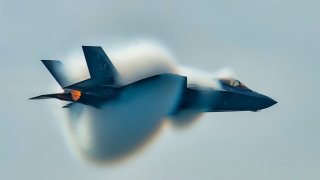Why the F-35 Is the Most Expensive Weapon Ever
The F-35 might be the most powerful fighter jet to ever fly in the sky. And yet, the massive price tag means it will be constantly second-guessed.
Humans have always waged war. For territory, resources, pride, or power. And to wage war, humans have always relied upon an ever-evolving set of weaponry. Stanley Kubrick’s seminal 2001: A Space Odyssey, which depicts the dawn of man, begins with the fictionalized discovery of weapons.
In 2001, an opening scene set to Richard Strauss’s Also sprach Zarathustra, highlights a pre-human ape discovering the use of a boar femur as a weapon. The ape then wields the femur to conquer a rival tribe. Whether a boar femur or a stick or a stone, weapons started simply enough but have progressed gradually into increasingly sophisticated devices and machines – from sticks and stones to bows and arrows, to knives and catapults, to muskets and cannons, to machine guns and tanks, to nuclear warheads and surface-to-air missiles. And throughout the evolution of human weaponry, one weapon system stands alone as the single most expensive weapon system ever devised: the F-35 Joint Strike Fighter.

F-35: The Most Expensive Weapon Ever
Lockheed Martin’s fifth-generation F-35 JSF program has cost $1.7 trillion to date. Trillion. The number is difficult to comprehend. By comparison, the cutting-edge, super-expensive Ford-class aircraft carrier program has cost taxpayers under $150 billion. Billion.
The fifth-generation F-22, not exactly a cheap program, cost taxpayers $66 billion. The entire U.S. annual defense budget is under $900 billion – nearly three times the defense budget of China, and ten times the defense budget of Russia. Yet, the F-35 program is pushing the $2 trillion mark. How?
The F-35 program is one decade overdue and 80 percent over budget.
“The Department of Defense’s most expensive weapon system – the F-35 aircraft – is now more than a decade behind schedule and $183 billion over original cost estimates,” the Government Accountability Office reported last May. And the costs are likely still adding up. “This program is weighing options to upgrade its engine and cooling system. But it hasn’t taken some important steps, such as fully assessing the costs and technical risks of the different options. DOD also doesn’t plan to manage the upgrades as a separate acquisition program. This would limit Congress’s insight into possible future cost increases.”
As the GAO found, the F-35 procurement costs are still increasing steadily – up $13.4 billion since 2019. Why? In part, because the DOD has slowed down its F-35 purchase tempo and added years to the delivery schedule. Also, the DOD is working to modernize the F-35, with the Block 4 aircraft. But the Block 4 is experiencing development delays and cost overruns. To date, the Block 4 upgrade has cost $16.5 billion.
What is being upgraded?
“The program is exploring options for modernizing the F-35’s engine and thermal management system that is used to cool aircraft subsystems that generate heat,” GAO reported. “The program plans to manage this multi-billion dollar effort under the existing program, which is scheduled to transition to sustainment soon and that would limit congressional oversight. The cooling system is overtasked, requiring the engine to operate beyond its parameters. The extra heat is increasing the wear on the engine, reducing its life, and adding $38 billion in maintenance costs.”
Irking Taxpayers
The F-35 – and especially the F-35’s costs – have been irking taxpayers since the program’s inception, raising questions about the necessity of human history’s most expensive weapon system ever. The question was highlighted last September when an F-35 went missing in South Carolina.
“How in the hell do you lose an F-35,” asked Representative Nancy Mace (R-S.C.). “How is there not a tracking device and we’re asking the public to what, find a jet and turn it in?”
“Was the transponder working?” asked CNN’s Oren Liebermann. “If not, why wasn’t it working? Why, maybe, had it been switched off? What was the mission it was on? All of this is either under investigation or a question we haven’t gotten an answer to yet.”
The episode renewed interest in the jet, prompting mainstream media outlets like CNN to wonder: “How in the heck can you spend so much money on a plane that doesn’t work the way it’s supposed to?”
“The exact amount of money for a single aircraft like the one that went missing is somewhere around $100 million,” CNN reported. “The entire F-35 program is on track to cost $1.7 trillion over the lifetime of the plane. Trillian. With a ‘t.’”
Weapons development has come a long way since the boar femur. The F-35 is a jack-of-all-trades fifth-generation fighter, capable of air-to-air and air-to-ground functions. Available in three variants, to meet the needs of the Air Force, Navy, and Marine Corps, respectively, the F-35 is the most digitally connected aircraft ever made – in many respects, the thing is a flying computer. But the cost of the program is remarkable, and the cost will always raise questions over whether the investment was worthwhile.
About the Author
Harrison Kass is a defense and national security writer with over 1,000 total pieces on issues involving global affairs. An attorney, pilot, guitarist, and minor pro hockey player, Harrison joined the US Air Force as a Pilot Trainee but was medically discharged. Harrison holds a BA from Lake Forest College, a JD from the University of Oregon, and an MA from New York University. Harrison listens to Dokken.
All image are Creative Commons.


